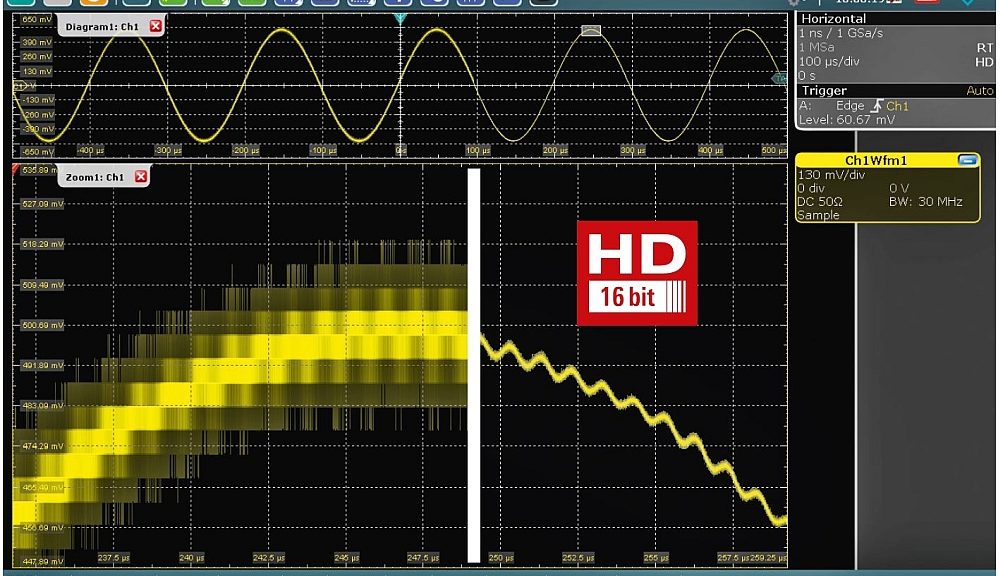- Rohde & Schwarz announces that all oscilloscopes in its R&S RTO and R&S RTP ranges now feature High Definition mode to achieve 16-bit vertical resolution.
- This High Definition mode is now available as standard on the new R&S RTO and R&S RTP oscilloscopes as it is already available on the R&S RTE range.
A higher vertical resolution makes it possible to identify the smallest details of a signal whose amplitude can reach several hundred volts. Thanks to the High Definition mode, Rohde & Schwarz oscilloscopes have this capability by using a hardware low-pass filter that filters the signal after the Analog/Digital conversion stage. This filtering reduces the power of the noise and thus increases the signal-to-noise ratio to provide vertical resolution of up to 16 bits.
The bandwidth of the low-pass filter can be adjusted from 10 kHz to 2 GHz to adapt to the specificities of the measured signal. The lower the filter bandwidth, the better the signal-to-noise ratio. The waveforms are then displayed with a higher resolution to visualize certain details of the signal that would otherwise be hidden by the noise.
Hardware low-pass filtering in real time does not affect the rate of signal acquisition and processing. All analysis tools, including automatic measurements, FFT processing and history mode, can be used when high definition mode is enabled.
Each of the digitized samples with a resolution of up to 16 bits is taken into account by the trigger system. This means that oscilloscopes are able to trigger even on the smallest signal amplitudes.
Since high definition mode is not based on decimation, the increase in resolution is not accompanied, according to Rohde & Schwarz, by a reduction in the sampling rate. There is therefore no aliasing effects. When high definition mode is enabled, signals can be digitized at the maximum sampling rate, and therefore with the best possible temporal resolution.






